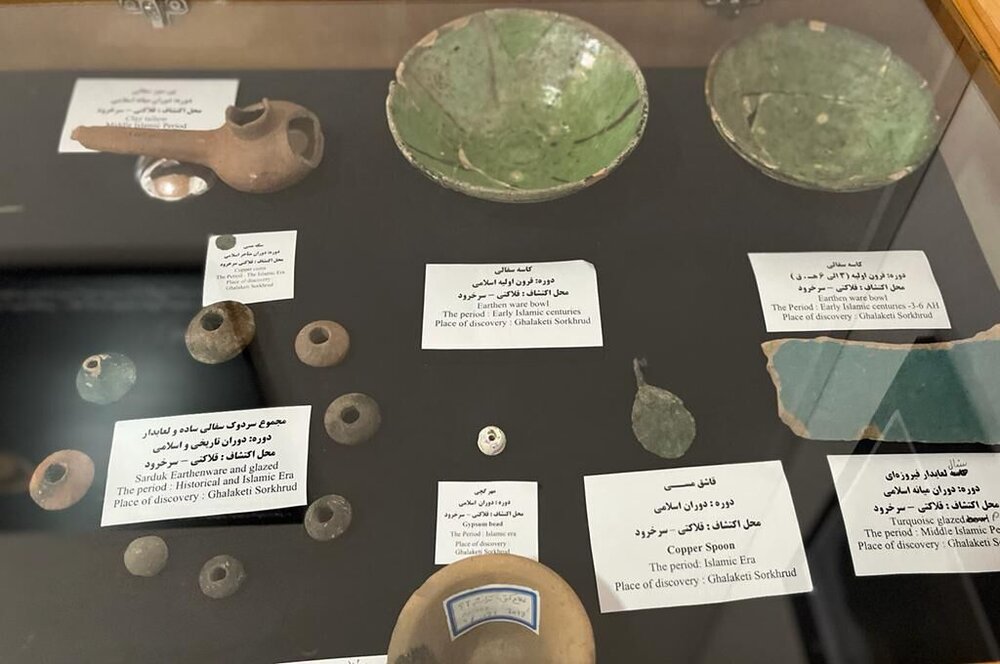Relics from Iron Age onwards go on show in northern Iran

TEHRAN – Millennia-old objects recovered in Qala Koti Tepe, a historical site in Sorkhrud, northern Mazandaran province has been put on show at the history museum of Amol, IRNA reported on Sunday.
The relics have been recovered from the ancient hill during two seasons of archaeological excavations, the report added.
The relics that date back to different historical eras including Iron Age, Parthian, Sassanid, and Islamic eras, include glazed pottery, metal works, copper utensils, and coins.
Qala Koti Tepe is the first ancient site on the coast of Mazandaran to be subjected to scientific archaeological excavations.
The hill, which is located four kilometers from the Caspian Sea, was registered on the national heritage list in 2011 and archaeologists have been exploring it for more than a decade.
The first season of excavation took place in the eastern part of the hill, and excavation went down to a depth of about 10 meters from the hilltop, but was stopped by groundwater, said Meysam Fallah, who presides over the project.
In this phase of the project, plain gray pottery and architectural remains, including a floor and accumulated debris, associated with the Iron Age have been identified, he added.
Several ceramic seals decorated with animal and geometric motifs and inscriptions in the Pahlavi script were also found. These seals rank among the most important finds of this area, he noted.
The second season of excavations was done in the eastern part of the hill, where a stone seal with the image of a rabbit was found, a symbol for women in the Sassanid era, he explained.
A significant accomplishment of the excavation season has been the discovery of pottery and clay related to the Parthian-Sassanid period, he mentioned.
An early civilization flourished at the beginning of the first millennium BC in Mazandaran (Tabarestan).
Its insecure eastern and southeastern borders were crossed by Mongol invaders in the 13th and 14th centuries. Cossacks attacked the region in 1668 but were repulsed. It was ceded to the Russian Empire by a treaty in 1723, but the Russians were never secure in their occupation. The area was restored to Iran under the Qajar dynasty.
The northern section of the region consists of lowland alongside the Caspian and upland along the northern slopes of the Alborz Mountains. Marshy backlands dominate the coastal plain, and extensive gravel fans fringe the mountains. The climate is permanently subtropical and humid, with very hot summers.
ABU/AFM
Leave a Comment